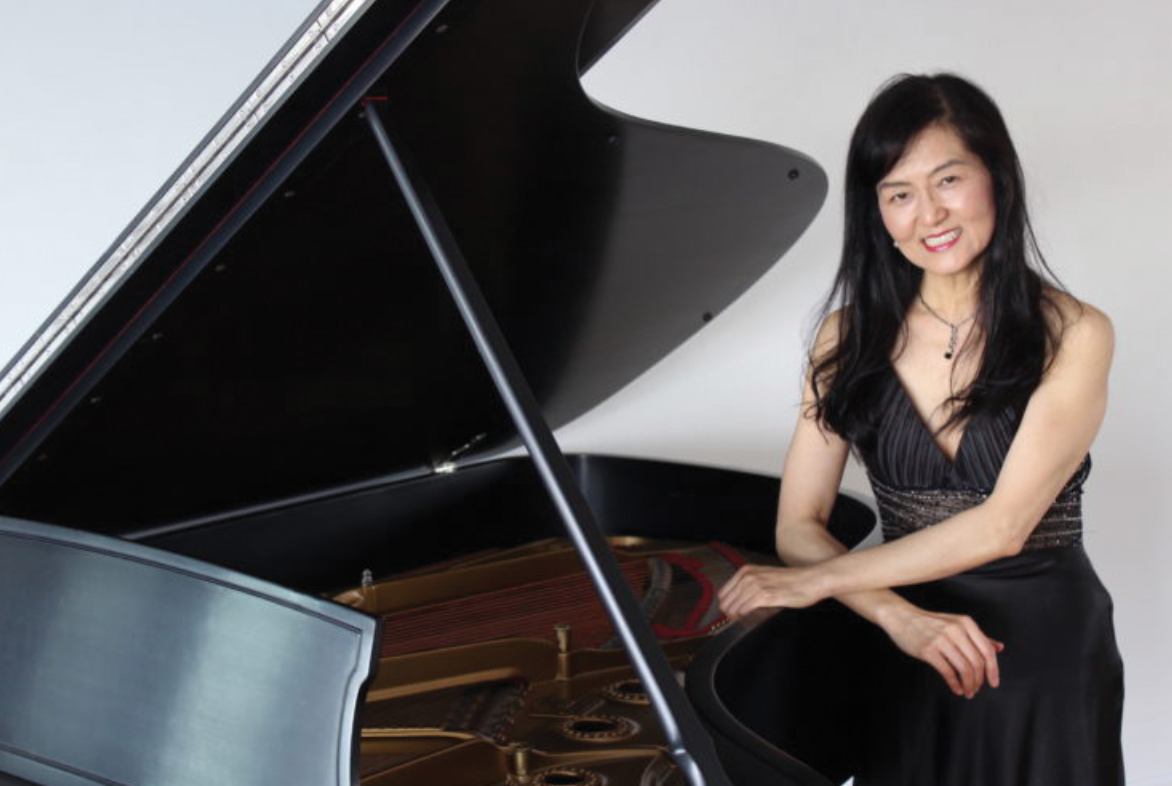On Oct. 4, 2025, Japanese-American pianist and Occidental College professor Junko Ueno Garrett made an appearance at the University of California, Riverside (UCR) as part of the Florence Bayz Music Series program. Unveiling her project “Musica de España: Life and Music in Spain” at Arts Building 157, Junko played arrangements of late 19th and early 20th century Spanish composers, much to the delight and awe of the audience. Performing these songs on a piano, Garrett’s performance evoked a sense of intimacy and fervor that could be felt throughout the room.
Garrett opened her performance by playing the fifth and sixth sequences from the music piece “Danzas Españolas, Op. 37.” Originally composed by Enrique Granados, Garrett’s interpretation of the piece evoked a spirit of Romanticism falling in line with the period where the composition was first created. Switching between a melancholic symphony and an energetic beat suitable for a ballroom waltz, the fifth part served as an interesting introduction to the types of musical numbers that would be played throughout her performance.
Her transition from the fifth to the sixth sequence of the composition was practically seamless, with the sixth part continuing the fluctuation between slow and energetic tempos. She was promptly greeted with a round of applause by the audience at the end of the composition.
Giving a brief background on the composer Manuel de Falla, Garrett continued her performance by playing his piece, “La Danza Española No. 1,” from de Falla’s opera “La Vida Breve.” With a rapid tempo and a tone that feels grandiose and adventurous, her take on the musical piece practically encapsulates the culture and essence of Spain. Garrett’s use of the piano when playing the composition brought out a certain sense of class as well as a Baroque aesthetic.
The way that Garrett briskly played through the faster components of the piece was nothing less than virtuosic and stunning. The looks of astonishment on the faces of the audience in spite of their respectful silence made it evidently clear that they were fully attentive and enjoying the program.
For her third act, Garrett returned to the work of Enrique Granados as she played one of his most famous pieces, “Allegro de concierto, Op. 46.” Famous for winning a competition at the Madrid Royal Conservatory in 1903 all the while putting Granados in the national spotlight, the composition was done justice by Garrett as she powered through the intricate tone switches and motifs that the song is known for. Junko’s fingers moved as fast as a speeding bullet as she interweaved various major and minor notes, producing a swelling and harmonious wall of sound. The longest and arguably most complex piece in her setlist, Garrett’s iteration of “Allegro de concierto, Op. 46” was practically flawless.
Along with the works of Manuel de Falla and Enrique Granados, Garrett also played a few works from Isaac Albéniz. Her first piece from Albéniz, being “Tango” from “Espana: Seis hojas de album, Op. 165,” served as a slow, intimate piece compared to the other songs that she covered up until that point. With the composition lasting only two minutes, performance of “Tango” served as a brief but mellow resting point for the audience to take in.
She then transitioned to “Asturias” from “Suite Espanola, Op. 47.” One of Albéniz’s more recognizable works, Garrett managed to play the composition’s complex trills on the piano, making the rendition sound like a mix between traditional flamenco and Mozart-esque classical music.
Garrett concluded her established setlist with “Malaguena” from “Suite Andalucia,” a musical number from Cuban composer Ernesto Lecuona. Just like with de Falla’s “La Danza Española No. 1,” the arrangement has a sense of magnificence to it. Just by listening to it, one could imagine themselves traversing the golden hills of Spain in search of adventure à la Don Quixote. With a rhythm that gradually becomes livelier as the composition progresses, her rendition of the song served as a bombastic conclusion to the program
To the appeasement of the audience, Junko Ueno Garrett answered a few questions from the audience regarding the composers and their works before ending her performance with an encore. To many of the audience members, her performance acted as a wonderful deep dive into the world of Spanish music. If anything, Garrett’s performance effectively highlighted the vibrant culture and sound of Spain as well as the nation’s long-lasting influence on music in general.
Verdict: Junko Euno Garrett does a superb job of conveying the vibrant art and long-lasting influence of Spanish music, setting an example for how cultural music should be.








